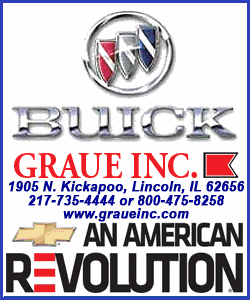|
The $98 million project is funded through the federal American
Recovery and Reinvestment Act and will support an estimated 900
jobs. "Today's announcement will create hundreds of jobs and is a
major step towards making high-speed rail a reality in Illinois,"
said Quinn. "When the corridor is completed, travelers will be able
to move from Chicago to St. Louis in under four hours, making
Illinois the high-speed rail hub of the Midwest."
Construction will begin in early September on a 90-mile segment
that extends from just north of Alton to south of Springfield. It
then resumes just north of Springfield to south of Lincoln. A study
is currently being conducted to determine the best route through
Springfield. Track upgrades will include the installation of new,
high-speed rail and concrete ties. Work could be completed as early
as December 2010.
"Beginning construction on a high-speed rail line in Illinois
this fall brings with it not only the promise of quicker travel
between great cities like St. Louis and Chicago, but also hundreds
of construction jobs in our state," said U.S. Sen. Dick Durbin,
D.-Ill. "More than that, in every community along the corridor there
will soon be a chance for greater economic development. If there was
ever a moment in our history that we needed to create good-paying
jobs and spur economic development, it's this moment."
In January, the Obama administration announced that Illinois was
awarded $1.2 billion in ARRA funds for high-speed passenger rail --
one of only three states to receive an award of more than $1
billion. Illinois was among 31 states chosen to receive a total of
$8 billion that President Obama made available for high-speed
passenger rail. Overall federal investment in high-speed rail is
expected to create 6,000 jobs in Illinois.
[to top of second column] |


Illinois' high-speed rail signature route, Chicago to St. Louis,
received $1.1 billion for corridor improvements. The improvements
will allow passenger rail service from Chicago to St. Louis to
operate at speeds up to 110 mph and will include new locomotives and
passenger cars, rebuilding of track, additional signaling devices at
grade crossings, and implementation of state-of-the-art signal
technology.
In addition, $1.25 million in federal funding will be used to
complete an environmental impact study for a second track along the
same route to increase daily frequencies and $133 million to build
the Englewood Flyover on Chicago's South Side, a Chicago Region
Environmental and Transportation Efficiency project to clear rail
bottlenecks and eliminate significant delays for commuter, intercity
and freight trains.
[Text from the
Illinois Government News Network] |